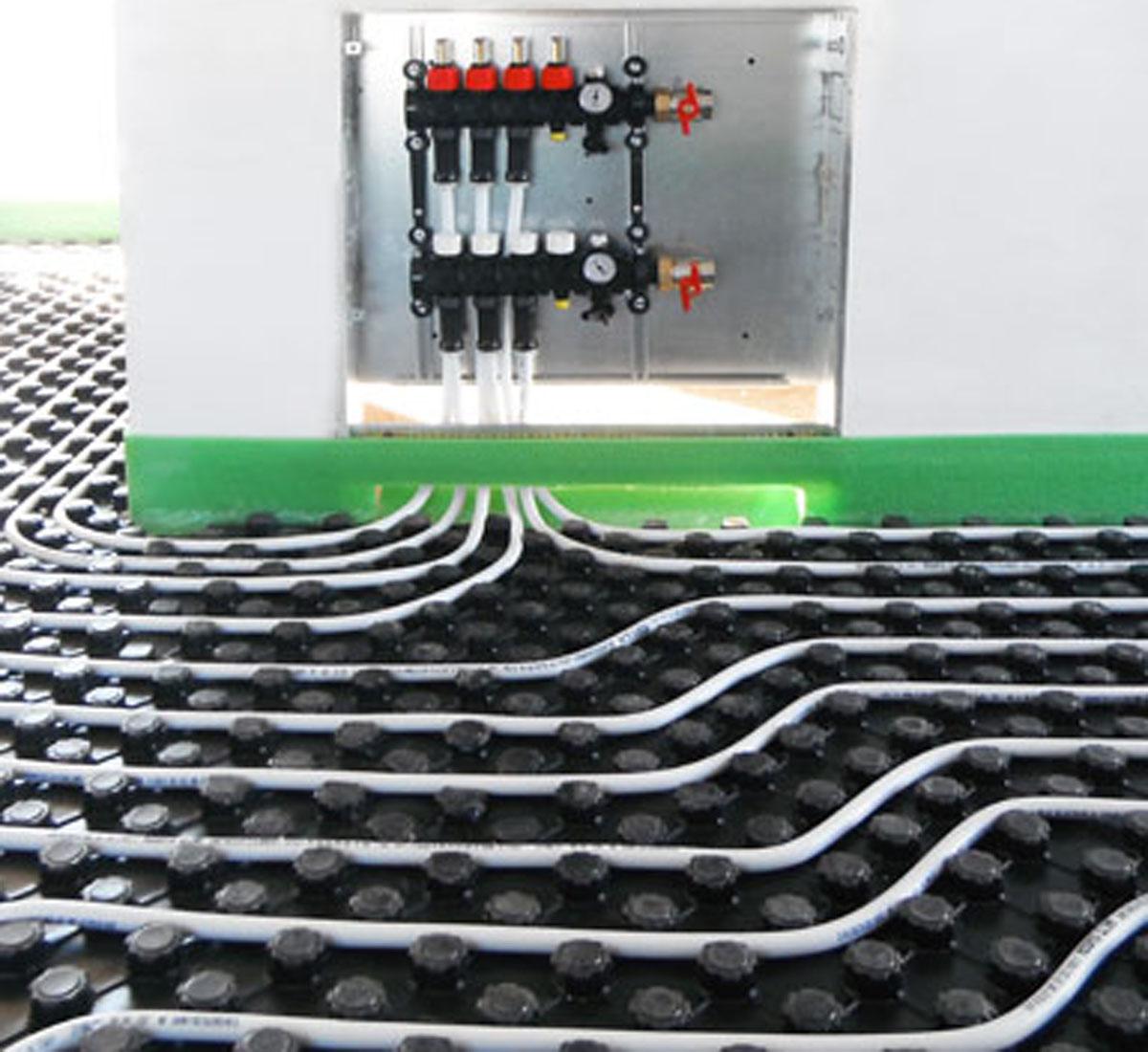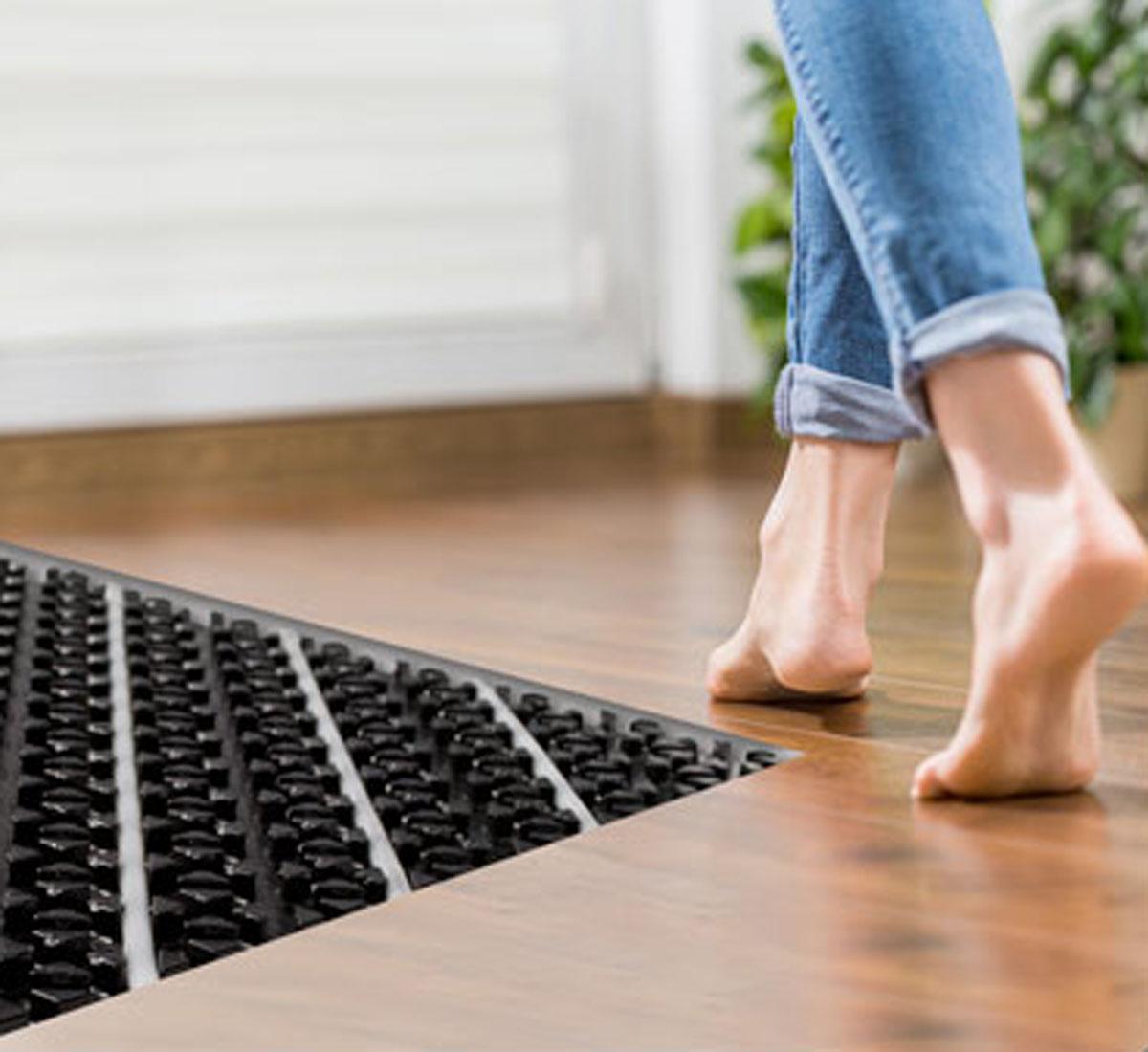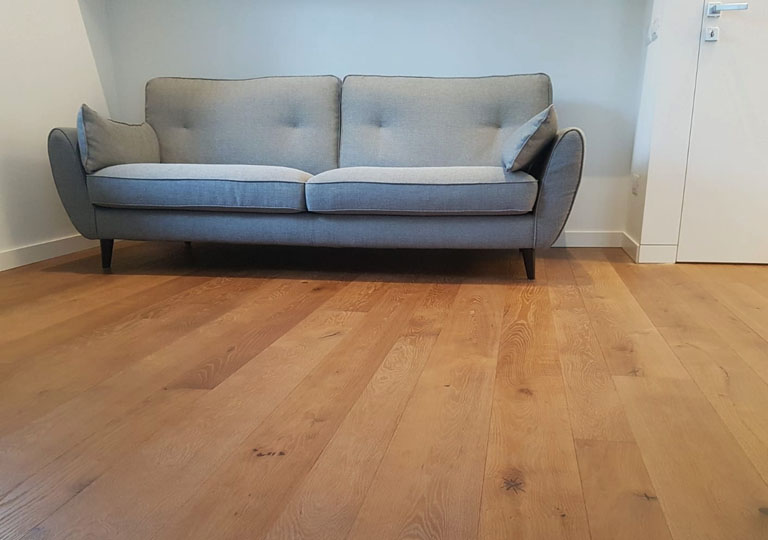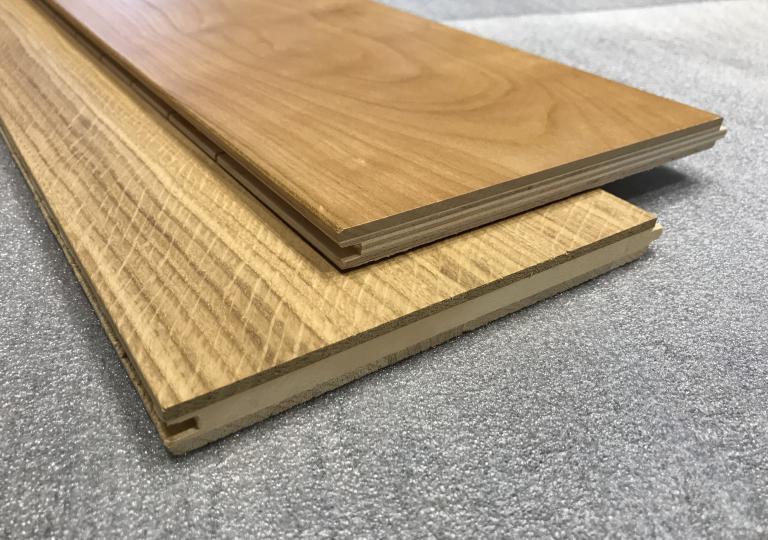Can a wooden floor be laid on underfloor heating?


The radiant systems consist of pipes made of plastic that are placed under the floor and fixed with appropriate elements. Inside them circulates the water that is heated thanks to the action of a boiler, or of a solar or photovoltaic system; in this way the heat is emitted and distributed evenly from the bottom towards the surface.
The basic principle of every system that allows heat to be transmitted throughout the home is radiation: the heat spreads homogeneously from the ground up to the ceiling, and it is this characteristic that makes the heating system better than traditional flooring, as the heat is not concentrated only in the areas of the emission source (radiator) but is evenly distributed throughout the room.
Example of a radiant system – see photo (source: Rossato Group)
The main advantages of using underfloor heating are:
Efficiency: consumption is considerably reduced compared to other heating systems
Well-being: the temperature within the environment is uniform
Versatility: this heating system can be converted into a cooling system

Wood by nature is a bad conductor of heat but, unlike a few decades ago, today we have new technologies available that allow us to better manage its combination with floor heating systems making it a suitable material for this type. of laying.
In fact, thanks to its thermal resistance, wood ensures that there is no direct contact with the heat of the radiant system, and allows us to perceive the pleasant sensation of well-being and warmth when we walk barefoot. The parquet thus allows the uniform distribution of heat over the entire surface, guaranteeing a relative humidity value of the air more suitable for housing needs. The ideal installation on a underfloor heating system is the glued-down installation.
In the picture an example of underfloor heating (Source: Rossato Group)
It is important not to forget that wooden floors are subject to dimensional changes, being very sensitive to changes in humidity and temperature that take place in the environment. This happens because the wood is a hygroscopic material and absorbs and releases the humidity present in the surrounding environment. By virtue of this, it is essential that the environmental conditions required for a suitable wood / environment hygrometric equilibrium are respected, that is a humidity value between 45% -60%, surface operating temperatures at the pavement not exceeding 29 ° C and temperatures environmental conditions close to 20 ° C.
The pre-finished parquet with 2 or 3-layer structure is more suitable for laying on underfloor heating because, unlike solid wood parquet, it can manage and better withstand the thermal stress of the system.
In conclusion we can say that the combination of wood-floor heating is possible, considering the characteristics of the various wood species and maintaining the environmental conditions indicated above. Lignum Venetia offers a certified quality product suitable for this type of installation, as evidenced by the tests carried out in the CATAS laboratories, which will be with you for a long time with its warmth and natural elegance.




